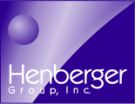How Do I Increase The Value of My Business?
I wish there was an easy answer to that question because it’s one I hear frequently. Unfortunately in order to understand the concept of value it will be necessary to get a bit technical on you. By technical I mean that we will need to dissect the components of a valuation and the starting point is to select at least one methodology to take a look at.
One of the most popular methods for preparing a business valuation is the Discounted Cash Flow (“DCF”) approach and it wins the nomination for being looked at in all of its pieces.
There Are Four Ways to Enhance the Value of Your Business
Sound familiar? I thought it might. But we will look at it from a different perspective and consider the component parts of the calculation.
Using the DCF framework, there are four basic ways in which the value of a business can be enhanced:
In Other Words
Our life in business is full of actions, some of those actions create value, some reduce value and some are value neutral. Obviously the key is to concentrate on those actions that enhance value, minimize or eliminate those that have a negative impact and at least understand that other actions may make sense but have no discernable impact on value.
In other words, you should review your action plans to ensure that you concentrate your efforts are enhancing value.
First of all we need to remember that for an action to affect the value of the business (either positively or negatively), it has to do one of the following:
- Affect current cash flows (or)
- Affect future growth (or)
- Affect the length of the high growth period (or)
- Affect the discount rate (cost of capital)
Over the remainder of this article and ones to follow we will take a look at each of these in turn. By the end of this series you should have a much better sense of how your actions are affecting the value of your business.
Ways of Increasing Current Cash Flows
The assets of a business reflect investments that have been made historically by the business. On occasion those assets can be either poorly made or poorly managed. It is entirely possible to increase the after-tax cash flows generated by those assets.
Before we turn to those two concepts we had better expand on what we mean when we talk about Cash Flows.
The cash flows that are considered in the DCF approach are after taxes and reinvestment needs have been met. This is often referred to as EBITDA or Earnings Before Interest, Taxes, Depreciation and Amortization or more precisely:
From a strictly mathematical perspective it should hold true that a business that can increase its current free cash flows, without significantly impacting future growth or risk, will increase its value.
Article published with permission from Graham Mathew & Partners LLP and Ran One

858.345.4435
How do I increase the Value of My Business? - Part One
Resources
Copyright Henberger Group Inc.

Recommend this article to a friend
